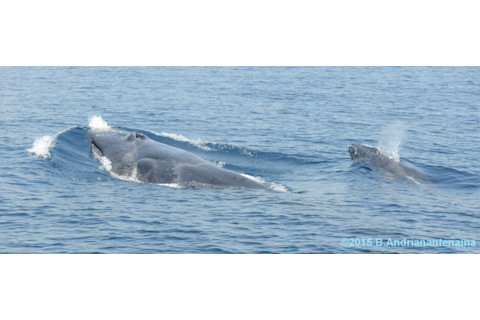
Last fall, New England Aquarium biologist Salvatore Cerchio shared some incredible observations he and his colleagues had made off the coast of Madagascar. They'd found a population of Omura's whales. Previously, no scientists had ever seen these animals alive—and they only knew of the whales living far away, in the western Pacific. By following the whales around the Indian Ocean, the researchers gleaned tidbits of new information. They observed the whales' asymmetrical coloring, mostly gray with a white patch on the right side of the jaw. They watched the whales feed by lunging through the sea with their mouths wide open to filter out tiny animals. And they saw that Omura's whales tend to hang out alone, though they may be listening to each other's distinctive songs underwater. Now, Cerchio has published new video footage of the Madagascar population. An older video showed a close-up shot of one whale gliding through the water alone. In the new footage, you can see a whale stretching out its expandable throat to gulp food from the water (watch near the beginning). You'll also see a mother swimming alongside her calf, as well as shots of other whales that show you their whole long, narrow bodies. The animals are about 8 to 12 meters long. https://www.youtube.com/watch?v=h9PVM6CavTk Researchers captured the new videos in November, when they returned to Madagascar to study the Omura's whale population again. This time they made 80 whale sightings—nearly twice as many sightings as during the previous four years. The sightings included five mother-and-calf pairs. There was a booming population of tiny, edible krill in the water, which might have attracted more of the filter-feeding whales than usual. There's not much to hear in the videos. But Cerchio and his colleagues have been gathering audio recordings of the Omura's whales so they can start learning about the rare animals' songs, too.
Previously: Mysterious Whales Seen Alive for the First Time
Image: (c) 2015 B. Andrianantenaina.













